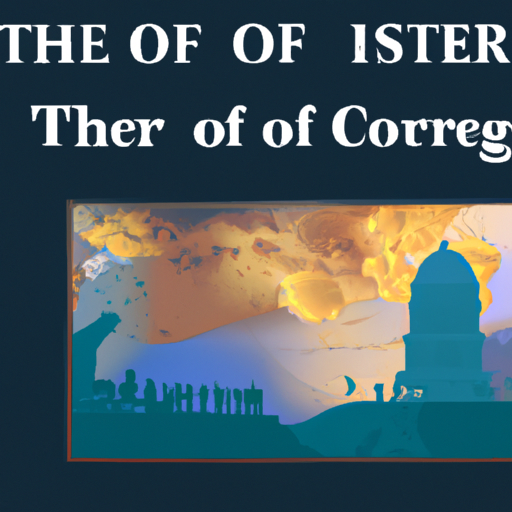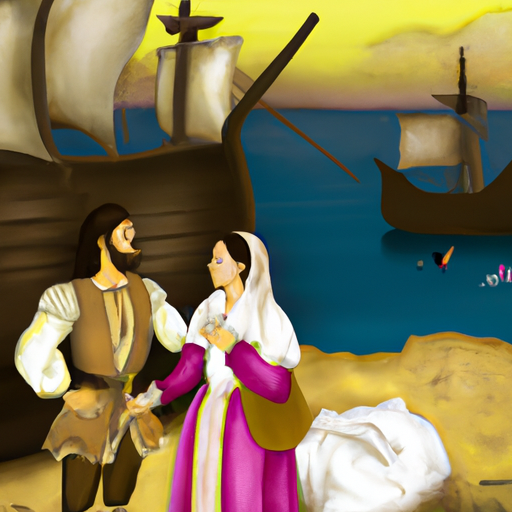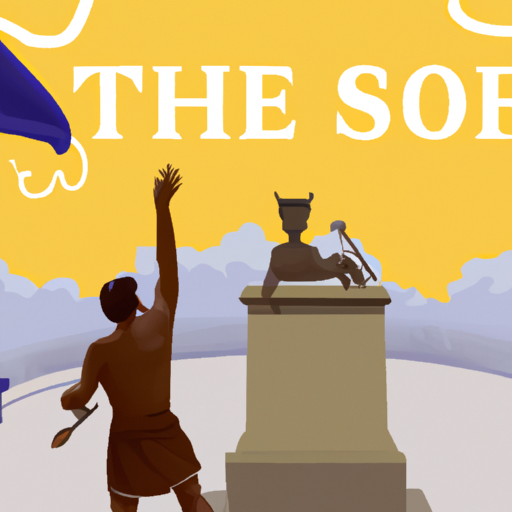Exploring the History of the Main Conflict of the Victorian Age
Uncover the enigmatic tale of a bygone era, where the struggle between modernity and antiquity was at its peak. Delve into the depths of a time where innovation and convention clashed in a battle for supremacy. Unearth the secrets of this period, when progress sought to challenge the status quo and tradition refused to be left behind. Explore the Victorian Age and its captivating history.
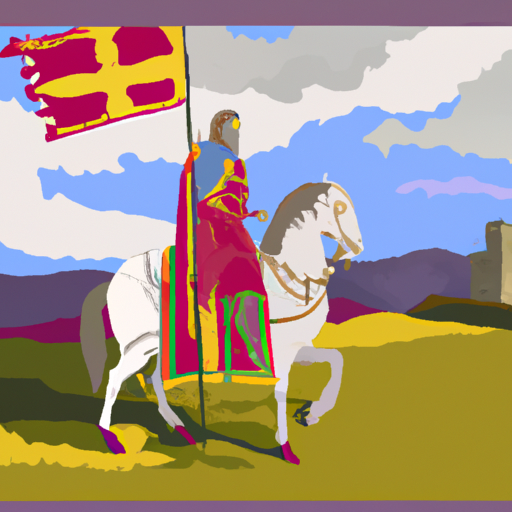
A period of fervent transformation and development, the Victorian Age was an era of immense contrast between modernity and antiquity. As innovation sought to break free from the shackles of convention, tradition clung on tenaciously. An air of mystery pervaded, with secrets held close to the chest.
Technological advances such as steam engines, telegraphs, and telephones revolutionized communication and transportation. The Industrial Revolution spurred economic growth while literature flourished with authors like Charles Dickens captivating readers around the world.
Social reforms improved living conditions for many citizens in Britain, with education becoming more accessible and laws passed to improve working conditions in factories. Women’s rights advocates fought for greater representation in politics and society at large.
The Victorian Age left a lasting legacy that can still be felt today; its spellbinding history continues to intrigue us with tales of progress versus stagnation, reform versus resistance, and innovation versus tradition. Its secrets have much to teach us about our own times – a reminder of where we came from and where we may be headed next.
.
Introduction
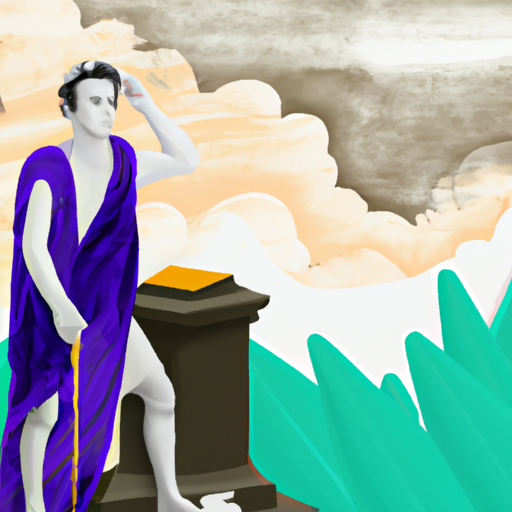
A period of bewilderment and unpredictability, the Victorian Age (1837-1901) saw an immense transformation in the way people lived, worked, and connected with one another. The industrial revolution brought a rapid shift from agrarian to industrialized economies, as well as a surge in population and the emergence of a middle class. This sparked a clash between old-fashioned values and modernity, as well as between the affluent upper classes and those who had to labor for their living. As Britain’s sphere of influence widened, its citizens were exposed to foreign cultures and ideologies, which only added to the strife within society.
– History of Social Class Conflict in the Victorian Age
In the Victorian Age, a deep rift existed between the privileged and deprived. While the affluent luxuriated in opulence, the working class endured destitution and misery. This contrast incited numerous clashes between the two factions, from labor strikes to protests and even uprisings. Additionally, new social reform initiatives such as socialism and trade unionism were born during this time, aiming to enhance the circumstances of those in poverty. These struggles had an immense influence on both British society and politics of that era. It is evident that class conflict was a pivotal part of the Victorian Age’s history and heritage.
– Historical Impact of Imperialism on Victorian Age Conflicts
The Victorian Age brought about a period of immense transformation the world over, with imperialism – the policy of extending a nation’s power and influence through colonization and economic domination – playing an integral role in these changes. Nations such as Britain, France, Germany and Japan sought to expand their territories and enrich themselves by taking control of other countries, often leading to conflicts between imperial powers in competition for resources and influence. The repercussions of this are still palpable today.
Politically speaking, imperialism had a major effect on the Victorian Age. Imperial powers engaged in wars with one another over resources and land, resulting in great losses for all parties involved. As well as wars between imperial powers, there were also many colonial wars as imperial forces attempted to extend their reach to foreign nations; these too caused considerable damage to both sides.
Economically too, imperialism was influential during this era; wealthy nations used colonies as sources of raw materials and markets for finished goods, allowing them to become prosperous at the expense of those they colonized. This created huge disparities between wealthy countries and poorer ones that were unable to compete economically with their imperial overlords. Tariffs and trade restrictions imposed by imperial powers further hindered economic development in many parts of the world by making it difficult for local businesses to compete with foreign companies.
Finally, culture was profoundly impacted by imperialism during this period; local cultures were suppressed or assimilated into more “acceptable” forms dictated by colonial rulers in an effort to impose their own values on those they colonized – leading to a loss of cultural diversity around the globe as traditional ways of life were replaced by those imposed by imperial powers.
Ultimately, it is clear that imperialism had an extensive impact on the Victorian Age politically, economically and culturally – effects which are still felt today in many parts of the world where former colonies continue to suffer under oppressive regimes or unequal economic systems imposed by former imperial rulers. It is imperative that we remember this history so that we can learn from our past mistakes and strive towards creating a more equitable future for all people around the globe.
– Historical Significance of Gender Roles in Victorian Age Conflict
The Victorian Age was a period of immense transformation, with gender roles playing a major role in the disputes that developed between individuals and groups. To comprehend the historical magnitude of these roles, it is essential to appreciate how they formed the clashes of the Victorian Age.
In England during that time, men were seen as guardians and suppliers, while women were perceived as homemakers and mothers. This implied that males had more authority than females in terms of decision-making and public life. Men held influential positions in government, business, and religion while women were supposed to stay at home and care for their families. This caused an uneasiness between the sexes which often led to conflict.
One example of this tension can be observed in the controversy over suffrage. Women sought to have a voice in politics but were not given equal rights as men. This triggered a great deal of disagreement between those who supported equal rights for both genders and those who believed only men should be allowed to vote.
Moreover, gender roles also affected education. In some cases, girls were forbidden from attending school or receiving any formal education due to their gender status. This further confined their opportunities for advancement which caused even more tension between genders.
Finally, there was an intense emphasis on traditional values during this era which could lead to conflict when these values clashed with modern ideas about gender roles. For instance, some people believed it was inappropriate for women to work outside the home or engage in activities traditionally reserved for men such as politics or higher education. These conflicting views created yet another source of tension between genders during this period.
All things considered, it is evident that gender roles had a substantial effect on the conflicts that emerged during the Victorian Age. By understanding how these roles shaped various debates and issues we can gain insight into how different societies dealt with matters related to gender inequality during this era of history.
– Historical Analysis of Religious Tensions in the Victorian Age
The Victorian Age was a period of immense religious discord, with the history of the era rife with conflicts between various spiritual factions. The Church of England’s struggles against Roman Catholicism and Nonconformity, as well as the rise of secularism, were all causes of contention in 19th century Britain. To comprehend this time in history, it is essential to examine how these tensions manifested over time and their effect on society.
At the start of the Victorian Age, there were two primary sources of religious tension: the Church of England’s confrontation with Roman Catholicism and Nonconformity, and the growth of secularism. The Church of England had long been influential in Britain, but during this period it encountered increasing competition from both Roman Catholicism and Nonconformist sects such as Methodists and Baptists. This led to disagreements between Anglicans and Catholics regarding matters like education and marriage laws. At the same time, secularism was on the rise, with more people discarding traditional Christian beliefs in favor of scientific explanations for natural phenomena.
The tensions between religious groups continued throughout much of the Victorian Age, but there were also moments when collaboration was feasible. For instance, during Queen Victoria’s rule she attempted to foster religious unity by encouraging dialogue between different denominations. This resulted in an increase in ecumenical activities such as joint prayer meetings and inter-denominational conferences. Nonetheless, these attempts at reconciliation weren’t always successful due to longstanding divisions between various faiths that had been present for centuries.
The repercussions of religious tensions in the Victorian Age can still be discerned today. Although many religions are now accepted in Britain, some areas still harbor sectarian divisions that endure to this day. Additionally, some scholars argue that this period laid a foundation for modern debates about faith and science which continue to divide opinion today. By analyzing historical accounts from this era we can gain a better understanding of why religious tensions have persisted throughout British history – an insight which could help us find ways to bridge these divides for future generations.”
– Historical Overview of Political Unrest During the Victorian Age
The Victorian Age, between 1837 and 1901, was a time of great tumult in the United Kingdom. Numerous outcries and attempts at reform were seen throughout this era. This article will provide a brief look back at the political upheaval of this period.
At the beginning of Victoria’s reign, there was a swell of popular dissatisfaction with the government’s decisions. This included opposition to the Corn Laws – tariffs on imported grain – and demands for more representation in Parliament. In 1838, Chartism was born as a major movement for social and political change in Britain. The Chartists advocated for universal suffrage and other democratic reforms such as annual parliaments and secret ballots. Even though their requests were not initially met, some of their ideas were eventually accepted by Parliament in later years.
The mid-Victorian period saw an increase in labor unrest due to inadequate working conditions and meager wages among industrial workers. Strikes became common across Britain, climaxing with the General Strike of 1842 which lasted over two months and involved hundreds of thousands of employees all around England, Scotland, Wales, and Ireland. Alongside labor disputes, there were also multiple protests against religious persecution during this time frame.
By the late 19th century, there was escalating backing for Irish Home Rule among many British citizens because of rising tensions between Britain and Ireland over land rights issues. The Irish Home Rule Bill was introduced in 1886 but failed to pass through Parliament due to solid resistance from Conservatives who feared that it would weaken Britain’s control over its colonies. As a response to this failure, some Irish nationalists created militant organizations such as the Irish Republican Brotherhood (IRB). These associations sought freedom from Britain through armed struggle which caused several violent uprisings throughout Ireland during Victoria’s reign.
In conclusion, the Victorian Age was marked by extensive political upheaval because of discontentment with government policies and an intensifying need for reform among various groups within British society. Many of these struggles ultimately led to changes in legislation which improved situations for laborers and granted more rights to citizens throughout Britain’s colonies.
conclusion

A time of great tumult and transformation, the Victorian Age was marked by an intense clash between traditional and modern values. With the dawning of a new era of industrialization and social change, many found themselves challenged to reconcile the past with the present. This struggle for balance created a chaotic atmosphere that defined much of British life during this period.
.
Some questions with answers
Q1. What is the main conflict of Victorian Age?
A1. The main conflict of the Victorian Age was between traditionalism and progressivism.
Q2. How did this conflict shape history?
A2. This conflict shaped history by introducing new ideas, values, and technologies that would shape the modern world.
Q3. What were some of these new ideas?
A3. Some of these new ideas included industrialization, urbanization, democracy, and social reform.
Q4. How did the traditionalists respond to these changes?
A4. Traditionalists responded to these changes by attempting to maintain their power and authority while also trying to prevent change from occurring too quickly or drastically.
Q5. How did the progressivists view this conflict?
A5. Progressivists viewed this conflict as an opportunity for positive change in society and saw it as a way to create a better future for everyone.
